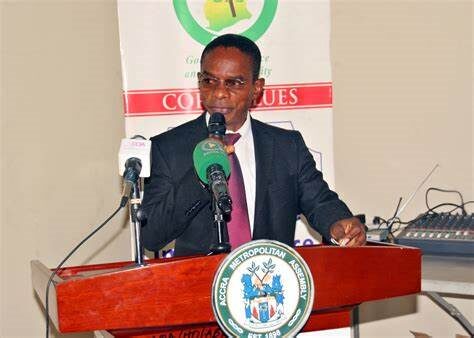Over 1,000 people died in road crashes in Ghana between January and April this year, as authorities link rising fatalities to poor road signage and obstructive advertising structures along major roads.
The National Road Safety Authority (NRSA) confirmed that more than 4,700 road crashes occurred within the four-month period, leaving 5,591 others injured. The figures represent a disturbing upward trend, with pedestrian knockdowns, vehicle collisions, and injury rates all increasing compared to the same time last year.
“There have been 6% more collisions, and almost 7% more vehicles and pedestrians knocked down. We have also recorded a 13% increase in injuries,” said Dennis Yirebu, Principal Manager at the NRSA, during a stakeholder engagement held with Metropolitan, Municipal and District Assemblies (MMDAs) in Accra.
The event, which had earlier been postponed, brought together local government stakeholders in a renewed bid to tackle the country’s worsening road safety crisis. One of the NRSA’s key recommendations — now issued as a directive — is the immediate removal of billboards mounted on road medians across the Greater Accra Region.
The Authority insists that such advertising structures compromise visibility for drivers and have contributed to avoidable collisions, particularly in high-traffic urban areas.
“Visibility is critical to saving lives on the road. The removal is not a blanket ban on all billboards, but a targeted action against those that endanger road users,” explained NRSA Director-General Abraham Amaliba.
The decision is part of broader efforts to operationalise the NRSA Act and its supporting regulations. Mr Amaliba called on all assemblies to set up and activate Road Safety Committees to ensure coordinated enforcement and planning.
The billboard directive has drawn attention to the wider issue of unregulated roadside development and the lack of basic road safety infrastructure in parts of the country. Many major highways and urban centres are characterised by a chaotic blend of signage, vendors, and visual distractions — all of which pose risks to motorists and pedestrians alike.
The NRSA’s data also highlights a significant number of crashes involving pedestrians, suggesting the need for urgent investment in safe walkways, crossing points, and public education on road use.
Ghana’s road safety record has long been a concern, with accidents frequently claiming the lives of school children, market traders, and public transport users. Despite numerous awareness campaigns, enforcement of traffic regulations has remained inconsistent, and in some areas, it has been virtually non-existent.
The NRSA says the new measures, including improved collaboration with MMDAs and the formation of local road safety committees, are essential to reversing the trend.
As road users continue to navigate a system fraught with risk, the question now is whether local authorities will act swiftly enough to prevent the next thousand deaths.















